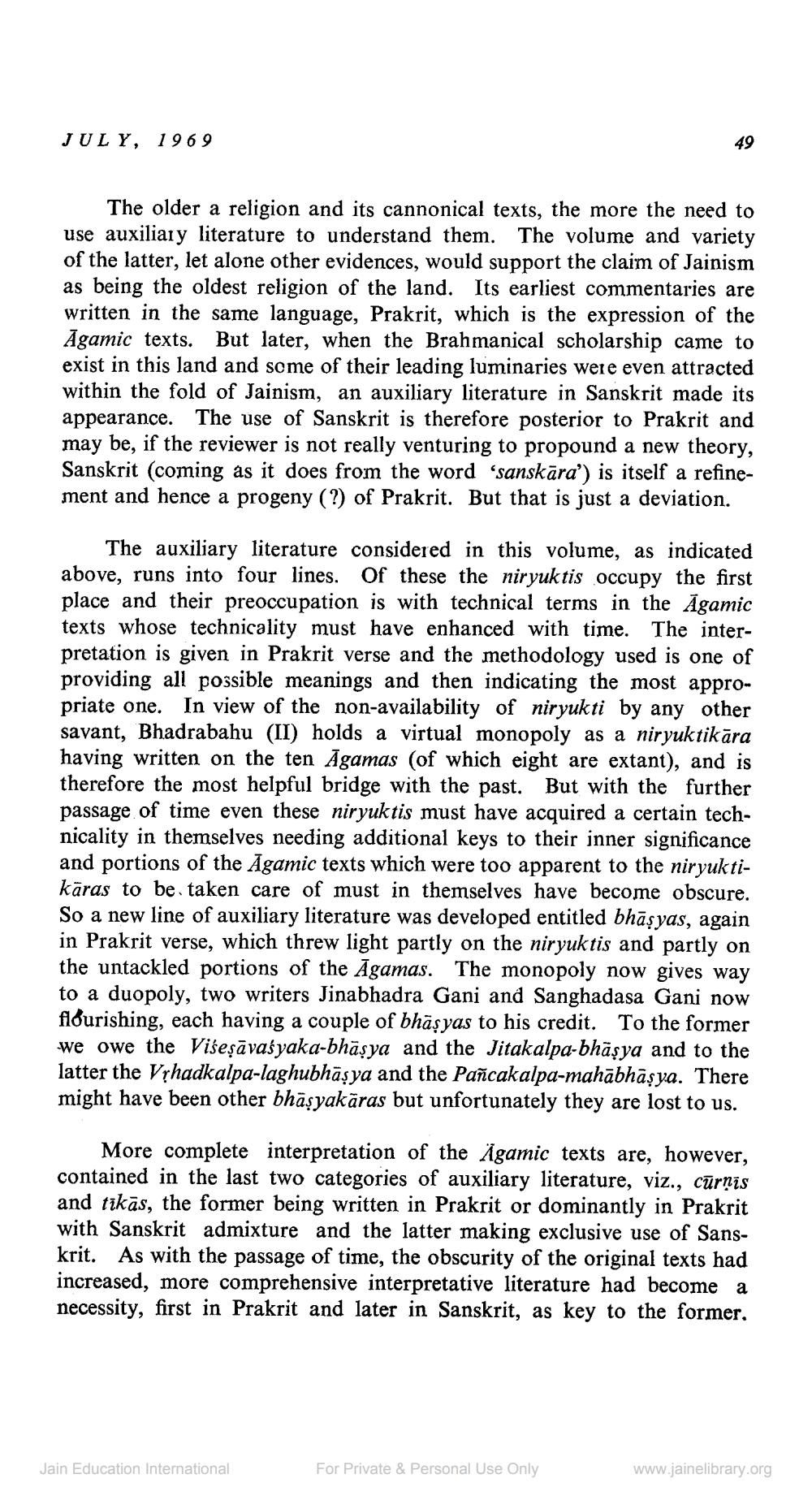Book Title: Jain Journal 1969 07 Author(s): Jain Bhawan Publication Publisher: Jain Bhawan Publication View full book textPage 7
________________ JULY, 1969 The older a religion and its cannonical texts, the more the need to use auxiliary literature to understand them. The volume and variety of the latter, let alone other evidences, would support the claim of Jainism as being the oldest religion of the land. Its earliest commentaries are written in the same language, Prakrit, which is the expression of the Āgamic texts. But later, when the Brahmanical scholarship came to exist in this land and some of their leading luminaries were even attracted within the fold of Jainism, an auxiliary literature in Sanskrit made its appearance. The use of Sanskrit is therefore posterior to Prakrit and may be, if the reviewer is not really venturing to propound a new theory, Sanskrit (coming as it does from the word 'sanskāra') is itself a refinement and hence a progeny (?) of Prakrit. But that is just a deviation. The auxiliary literature considered in this volume, as indicated above, runs into four lines. Of these the niryuktis occupy the first place and their preoccupation is with technical terms in the Agamic texts whose technicality must have enhanced with time. The interpretation is given in Prakrit verse and the methodology used is one of providing all possible meanings and then indicating the most appropriate one. In view of the non-availability of niryukti by any other savant, Bhadrabahu (II) holds a virtual monopoly as a niryuktikāra having written on the ten Āgamas (of which eight are extant), and is therefore the most helpful bridge with the past. But with the further passage of time even these niryuktis must have acquired a ce nicality in themselves needing additional keys to their inner significance and portions of the Āgamic texts which were too apparent to the niryuktikāras to be taken care of must in themselves have become obscure. So a new line of auxiliary literature was developed entitled bhāsyas, again in Prakrit verse, which threw light partly on the niryuk tis and partly on the untackled portions of the Āgamas. The monopoly now gives way to a duopoly, two writers Jinabhadra Gani and Sanghadasa Gani now flburishing, each having a couple of bhāsyas to his credit. To the former we owe the Višeșāvaśyaka-bhāşya and the Jitakalpa-bhāşya and to the latter the VỊhadkalpa-laghubhāsya and the Pañcakalpa-mahābhāsya. There might have been other bhāsyakāras but unfortunately they are lost to us. More complete interpretation of the Ägamic texts are, however, contained in the last two categories of auxiliary literature, viz., cūrņis and tīkās, the former being written in Prakrit or dominantly in Prakrit with Sanskrit admixture and the latter making exclusive use of Sanskrit. As with the passage of time, the obscurity of the original texts had increased, more comprehensive interpretative literature had become a necessity, first in Prakrit and later in Sanskrit, as key to the former, Jain Education International For Private & Personal Use Only www.jainelibrary.orgPage Navigation
1 ... 5 6 7 8 9 10 11 12 13 14 15 16 17 18 19 20 21 22 23 24 25 26 27 28 29 30 31 32 33 34 35 36 37 38 39 40 41 42 43 44 45 46 47 48 49 50 51 52 53 54 55 56 57 58
